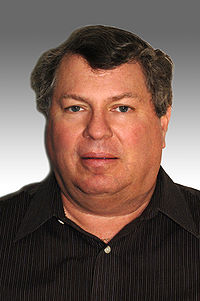From CASS
Richard Puetter

- Recalled: Research Physicist, CASS
Founder and Chief Science Officer, Pixon Imaging
- Email: rpuetter@ucsd.edu
- Office: SERF 438 (4th floor visitor office)
Related Websites
ADS
Personal web page
Pixon Imaging
pixon
Biography
Dr. Puetter has extensive experience in infrared instrumentation, IR observations, and computational physics, and has authored over 180 scientific papers. He has built a number of state-of-the-art instruments, including a mid-IR imaging spectrometer for the world's largest telescopes, the Keck Telescopes in Hawaii (B. Jones, Co-PI). He has made both ground-based and airborne observations of a variety of astronomical objects, and has substantial experience in the modeling of complex systems and numerical solutions to complex problems such as radiative transfer models of QSO emission line clouds and the solution of inverse problems. He has performed observational work on a variety of subjects, including the interstellar medium, quasars and active galaxies, supernovae, novae, planetary nebula, and solar system objects.
Most recently, Dr. Puetter has become interested in image reconstruction and minimum complexity modeling. He is a co-developer (along with Robert Piña) of the highly successful Pixon method of image reconstruction and information-theoretic modeling of images. The Pixon method of image reconstruction is currently the highest performance and one of the computationally fastest methods available. Dr. Puetter is also commercializing the Pixon method for the enhancement of military and security imagery, real-time commercial video, microscopy, and image compression, and is currently the CEO and Chief Scientist of Pixon Imaging, LLC. To date the Pixon method has been awarded 5 patents (plus one pending) for image processing. One of Dr. Puetter’s newest thrusts is to use the Pixon method to increase the performance of image compression and de¬compression. When applied to image compression, the Pixon method offers a theoretically optimal image compression method.
Dr. Puetter is considered a world expert in image reconstruction methods and was asked in 2005 to review this subject area for the Annual Review of Astronomy & Astrophysics.
Research Interests
Quasars/AGN, IR astronomy, interstellar medium, radiative transfer, computational physics, inverse problems, image reconstruction, complexity theory, image compression
Projects
Dr. Puetter spends much of his time working on Pixon Imaging projects which deal mostly with the development of real-time hardware for image enhancement. In addition, he continues to develop information-theoretic-based algorithms for image compression as part of his company’s efforts. Observationally he is pursuing observations of novae, supernovae, planetary bodies, and occasionally extragalactic targets in the optical and near-IR. Observations are primarily done at Lick Observatory since his group’s targets are generally bright enough to observe with a 3 meter telescope. Their spectroscopic observations are done with an instrument constructed by colleagues at the Aerospace Corporation that uses 3 sensors (optical and two IR sensors) to simultaneously measure the optical and IR through the same slit.